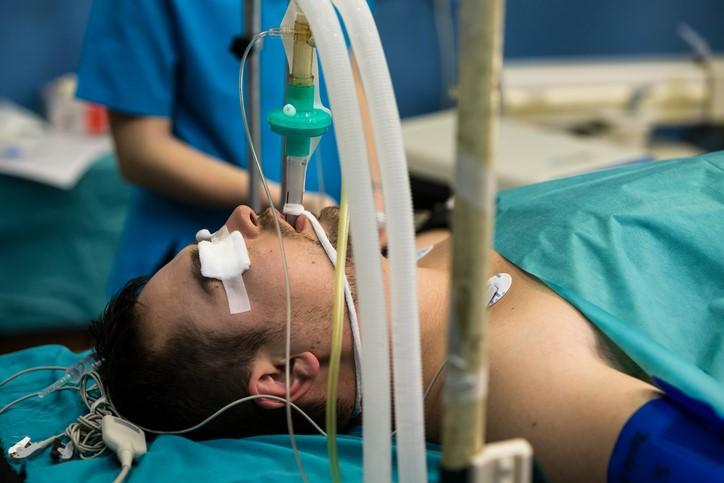European health officials are warning that high and rising prevalence of carbapenem-resistant Enterobacteriaceae (CRE) infections in certain countries could pose a healthcare threat across the continent.
The warning comes in a rapid risk assessment yesterday from the European Centre for Disease Prevention and Control (ECDC) that reports large differences in the national percentages of carbapenem-resistant bloodstream infections caused by Klebsiella pneumoniae, one of the most common types of CRE. Surveillance data shows that the percentages ranged from 0% to as high as 67% in European Union/European Economic Area (EU/EEA) countries.
CRE can cause severe urinary tract and bloodstream infections and spread quickly in the hospital environment. Because carbapenems are one of the last lines of defense against severe, multidrug-resistant bacterial infections, treatment options are limited. ECDC officials say they're concerned that travel or the transfer of patients from an EU/EEA member state with a high CRE rate to a country with low prevalence could cause CRE rates to rise in healthcare settings throughout Europe.
"We should be very concerned about the rise in carbapenem resistance in the EU/EEA as there are very few options for the treatment of patients with CRE infections," Dominique Monnet, head of the ECDC's Antimicrobial Resistance and Healthcare-Associated Infections Programme, said in a press release.
In an additional report, the ECDC released data on trends in European antibiotic consumption.
High CRE rates in 3 countries
The rapid risk assessment includes 2016 data from the European Antimicrobial Resistance Surveillance Network (EARS-Net) on invasive K pneumoniae and Escherichia coli isolates collected from blood and cerebrospinal fluid. For K pneumoniae, the data show carbapenem-resistance rates of below 1% for several countries. But in Romania, Italy, and Greece, the prevalence of carbapenem-resistant K pneumoniae was 31%, 34%, and 67%, respectively, and increasing trends for 2013 through 2016 were also observed in Portugal and Greece.
Overall, the EU/EEA population-weighted mean percentage for carbapenem-resistant K pneumoniae was 6.1%, down from 8.2% in 2013—a non-significant decrease. The rates of carbapenem-resistant E coli across the continent were much lower, with national percentages ranging from 0% to 1% and an EU/EEA population-weighted mean percentage of 0.1%.
E coli is the most common cause of community- and healthcare-associated urinary tract infections, and, along with K pneumoniae, is a frequent cause of ventilator-associated pneumonia and bloodstream infections in hospitals. When these pathogens become resistant to carbapenems—typically through the acquisition of carbapenem-resistance genes—the downstream effects include more severe illness, longer hospital stays, treatment failure, and higher mortality and are primarily caused by delays in effective treatment. Mortality rates for severe CRE infections are high, with rates above 50% reported for CRE bloodstream infections.
The impact of invasive CRE infections is compounded by a lack of treatment options. While there a few options (colistin, tigecycline, and fosfomycin), data on the effectiveness of these drugs are limited, and they are associated with more frequent adverse effects. Colistin, for example, is known to have high kidney toxicity. A new combination drug for treating CRE infections, ceftazidime-avabactam, was approved by European regulators in 2016 and has shown promising results, but there are concerns about resistance to that drug as well.
CRE infections are a threat to the wider healthcare system because they can spread rapidly in hospital settings on the hands of healthcare workers and on medical equipment, with high potential for outbreaks, especially in hospital units where patients are at higher risk of infection. As a result, rising resistance to carbapenems poses a significant threat to patients in intensive and neonatal care units and makes procedures like organ transplantation and cancer chemotherapy riskier.
While the overall prevalence of invasive CRE infections in Europe is low, ECDC officials are concerned about the spill of CRE from high-prevalence countries across borders. One way CRE can spread, for example, is from the transfer of a sick patient from an Italian hospital to a German hospital. Or a Swedish tourist could travel to Greece and come back colonized with carbapenem-resistant E coli that she acquired by eating contaminated food. If that person were to require subsequent hospitalization, the pathogen could spread in a Swedish hospital.
To guard against the spread of CRE, the rapid risk assessment recommends that hospitals implement and adhere to infection control measures (including hand hygiene, environmental cleaning, and contact precautions), screen patients at high risk of CRE colonization in their digestive tract, and implement antimicrobial stewardship programs, which could curb unnecessary use of carbapenems. In addition, the ECDC encourages hospitals involved in cross-border patient transfers to document and communicate CRE carriage or infection.
The report also calls for hospitals to conduct timely laboratory investigations to quickly identify CRE infections and avoid delays in appropriate treatment.
Antibiotic consumption remains steady
Meanwhile, the ECDC report on antimicrobial consumption in Europe found that the average consumption of carbapenems, along with other antibiotics used in hospitals and the community, did not significantly change from 2012 through 2016.
The report, based on 2016 data retrieved from the European Surveillance System, showed that the EU/EEA population-weighted mean community consumption of antibacterials for systemic use was 21.9 defined daily doses (DDD) per 1,000 inhabitants per day. This represented a slight decrease from 2015, but no statistically significant trend was observed for 2012 through 2016. Greece and Spain saw statistically significant increases in community antibiotic consumption, while Finland, Norway, Sweden, and Luxembourg saw statistically significant decreases.
In the hospital sector, the average EU/EEA consumption of antibacterials for systemic use in 2016 was 2.1 DDD per 1,000 inhabitants per day, with no statistically significant trend observed from 2012 through 2016. Statistically significant increases were observed in Greece, Malta, and Slovenia, and statistically significant decreases were observed in Finland, Estonia, and Luxembourg.
The average consumption of carbapenems was 0.05 DDD per 1,000 inhabitants per day, which comes out to more than 1 million carbapenem courses administered in the EU/EEA annually. A statistically significant increase in carbapenem use was observed in 10 countries, while only 1 country saw a decrease.
As in previous ECDC reports on antibiotic consumption in Europe, the data showed wide variability among countries, with northern European countries generally consuming fewer antibiotics than countries in southern and eastern Europe.
See also:
Jun 4 ECDC rapid risk assessment
Jun 13 ECDC press release
Jun 13 ECDC antimicrobial consumption report
May 29 CIDRAP News scan on earlier ECDC antibiotic consumption report























